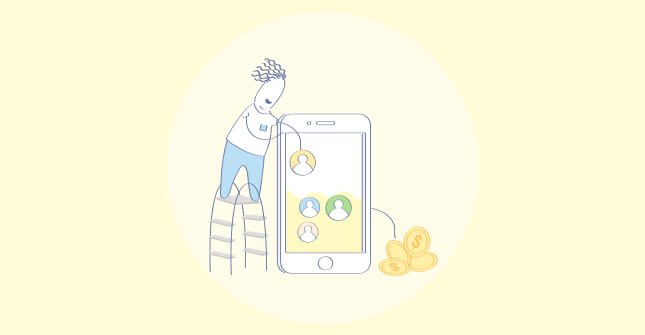If experience isn’t your strategy, you’re doing it wrong.
Let me ask you something—why do you stick with certain brands? Is it just the price? The product? Probably not. It’s the way they make you feel. It’s the seamless, personalized, effortless customer experience they create that keeps you coming back.
73% of customers say experience is a key factor in buying decisions. Many will even pay more for it. Yet, most companies still treat CX as an afterthought, reacting to customer pain points instead of proactively designing experiences that drive loyalty and revenue.
Great customer experiences aren’t accidents—they’re engineered. And that’s precisely why you need a Customer Experience Roadmap.
In this deep-dive guide, I’ll walk you through how to build a CX roadmap that turns first-time buyers into lifelong advocates.
Here’s what you’ll get:
- How to map every touchpoint—from first interaction to repeat purchase
- The key pillars of a winning CX strategy (that top brands swear by)
- Actionable steps to boost retention and customer satisfaction
- Real-world examples of brands doing CX right
Most companies talk about customer experience, but few actually design one that keeps customers coming back. By the end of this guide, you’ll have a clear, strategic plan to create CX that isn’t just good—but unforgettable.
Let’s get started.
What Is a Customer Experience Roadmap?
A CX roadmap is your technical blueprint for delivering better customer experiences. It’s not just a concept—it’s a structured, step-by-step plan that maps out how customers interact with your brand and where you can improve.
Here’s what typically goes into it:
- Mapping customer touchpoints: Every interaction matters. A roadmap tracks where and how customers engage with your brand or product, from their first website visit to post-purchase support.
- Evaluating current experiences: What’s working? What’s frustrating? A CX roadmap analyzes existing interactions to uncover gaps and areas that need improvement.
- Setting clear goals: A roadmap isn’t just about fixing issues—it’s about measurable improvements. From boosting retention and reducing response times to increasing satisfaction scores, having specific CX goals keeps everything focused.
- Implementing strategies and tools: Once you know where to improve, it’s time to take action. A roadmap helps refine support processes, introduce automation, or use analytics to track engagement more effectively.

Why Build a Customer Experience Roadmap?
Without a CX roadmap, you’re basically guessing what works and what doesn’t. Customers today expect seamless, personalized experiences, and if you’re not actively improving their journey, you’re losing them to competitors. A roadmap keeps you focused, ensuring every touchpoint is intentional, and every interaction adds value.
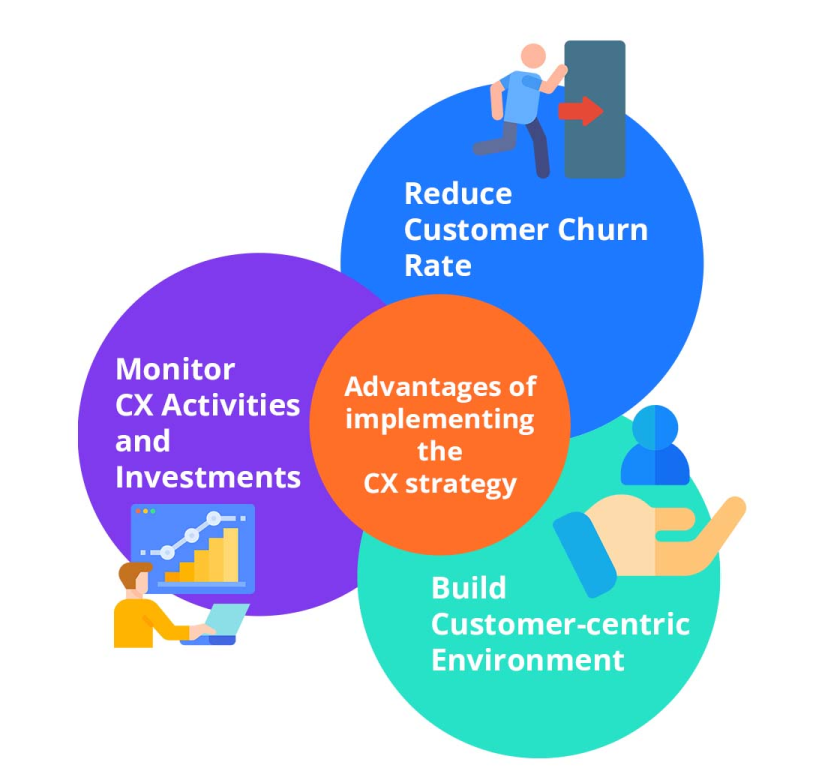
Here’s why you need one:
1. Gives You a Game Plan
A CX roadmap takes you from reacting to customer issues to proactively shaping better experiences. Without one, businesses often scramble to fix problems as they arise, leading to wasted effort and inconsistent improvements.
A roadmap ensures that every CX initiative is intentional and focused on key areas, such as streamlining support, improving onboarding, or refining personalization. Instead of guessing what customers need, you’ll have a structured strategy to create a smoother and more satisfying experience.
2. Keeps Teams on the Same Page
Customer experience isn’t just the support team’s responsibility—it involves marketing, sales, product, and operations working together. A roadmap aligns everyone around shared goals, eliminating miscommunication and disconnected experiences.
Without alignment, marketing might promise seamless onboarding while support struggles with high complaint volumes. A roadmap prevents these inconsistencies and ensures that every touchpoint reflects a unified customer experience.
3. Helps Customers Stick Around
Retention is cheaper and more profitable than constantly acquiring new customers. When people feel valued, they don’t just buy—they stick around, spend more, and recommend you to others.
A well-structured CX roadmap focuses on understanding and addressing pain points before they lead to churn. It allows you to build meaningful relationships, keep customers engaged, and turn them into long-term brand advocates.
4. Takes the Guesswork Out of Decisions
One of the biggest mistakes businesses make when improving customer experience is relying on gut feelings or assumptions rather than concrete data. Without a structured approach, companies often make random tweaks without knowing whether these changes will solve customer problems.
A CX roadmap eliminates this uncertainty by using real customer insights to guide decision-making. A well-built roadmap helps you pinpoint exactly where customers are facing friction.
5. Boosts Revenue, Plain and Simple
Customers who enjoy smooth interactions, personalized recommendations, and quick, helpful support tend to stick around, spend more, and refer others. A CX roadmap ensures that these improvements aren’t random but strategically designed to drive long-term growth.
Loyal customers spend 67% more than new ones, making retention just as necessary as acquisition. A solid roadmap helps businesses reduce churn by identifying friction points and fixing them before they push customers away.
How to Build a Customer Experience Roadmap
A CX roadmap isn’t just a document—it’s a strategic blueprint that helps you systematically improve interactions at every touchpoint. A well-structured roadmap ensures that CX improvements aren’t random guesses but data-driven decisions that actually enhance customer relationships.
Here’s how to build one:

Step 1: Evaluate Your Current Customer Experience
Before you can improve CX, you need to understand what’s working and what’s not. Here’s how to get started:
- CX Feedback: Leverage tools like Qualaroo’s free CX survey template to gather valuable insights directly from your customers.
- Internal Interviews: Connect with your support team to identify recurring issues, such as whether customers are frustrated by long wait times or other common pain points.
- Internal Workshops: Organize workshops with marketing, sales, and support teams to align on shared CX objectives and ensure everyone is working toward the same goals.
- Post-Purchase Surveys: Ask questions like, “Are you confused about using our product?” or “How can we help you complete your purchase?” to identify opportunities for improvement.
- Track Behavior: Use tools like heatmaps and session recordings to see how users interact with your website or app, highlighting pain points you might not catch otherwise. You can use Qualaroo’s AI-powered sentiment analysis to visualize your customers’ behaviors through word clouds and charts.
 Learn How to Use Qualaroo’s Sentiment Analysis Feature Powered by IBM Watson
Learn How to Use Qualaroo’s Sentiment Analysis Feature Powered by IBM Watson - Experience the Journey Yourself: Go through the buying process, sign up for support, and navigate your site as a customer would. This firsthand perspective will reveal gaps that need fixing.
Step 2: Customer Experience Journey Mapping
A customer experience journey map visually outlines how people interact with your brand, from first discovery to post-purchase engagement. Mapping this journey helps you identify key touchpoints, potential roadblocks, and opportunities to enhance the experience.
- Define Customer Personas: Before mapping the journey, start by defining your customer personas. Who are your ideal customers? What are their pain points, needs, and goals? Once you understand them, you can better outline the steps they will take in their journey.
- Break the Journey Into Stages: Divide the customer journey into clear stages such as:
- Awareness (when the customer first learns about your brand)
- Consideration (when they research your product or service)
- Decision (when they make a purchase or sign up)
- Retention (ongoing interaction and engagement)
- Advocacy (becoming a repeat customer or brand advocate)
- Identify Key Touchpoints: For each stage, map out the occurring interactions. These are the touchpoints where customers engage with your brand. Here are three sample customer journeys to guide your mapping:
Sample 1: SaaS Customer Experience Roadmap
| Journey Stage | Action |
|---|---|
| Awareness | User sees an ad or a blog post discussing a SaaS solution to their business problems (e.g., "How to Automate Your Marketing") |
| Consideration | User signs up for a free demo or watches a product video to understand the tool's features |
| Decision | User registers for a free trial, or opts for a demo with a sales representative |
| Retention | User receives onboarding support via tutorials, webinars, and emails to help them get the most out of the tool |
| Advocacy | After seeing positive results, the user shares their success story and recommends the software to colleagues |
Sample 2: eCommerce Customer Experience Roadmap
| Journey Stage | Action |
|---|---|
| Awareness | Customer sees a Facebook ad showcasing a new collection or product line |
| Consideration | Customer visits the website and browses through products, adds items to the cart, and reads customer reviews |
| Decision | Customer receives a personalized email or discount offer, prompting them to complete the purchase |
| Retention | After purchase, customer receives a thank-you email, an order tracking link, and suggestions for related products |
Sample 3: B2B Customer Experience Roadmap
| Journey Stage | Action |
|---|---|
| Awareness | Decision-makers find your brand via LinkedIn, trade publications, or a webinar |
| Consideration | They sign up for a whitepaper or case study to learn how your solution helps businesses like theirs |
| Decision | After a demo or consultation, they request a proposal and decide to sign the contract for your service |
| Retention | Regular follow-up calls, quarterly business reviews, and ongoing customer support keep them satisfied |
| Advocacy | After seeing improvements in their business, they provide a testimonial and refer your service to others in their industry |
Download Our Customer Experience Roadmap Template
(Make a copy of it to be able to edit)
Step 3: Analyze Competitors
Understanding why customers choose competitors over your company is essential for improving your customer experience and refining your offerings. Surveys are a great way to gain deep insights into the competitive landscape and capture valuable feedback directly from customers.
Here are some actionable ways you can analyze competitors and understand why customers choose them.
- Competitive Exit Survey: Why Did You Choose a Competitor?
At the time of an exit or when a deal is lost, it’s important to ask the right questions to gain insights into why the customer chose a competitor. By asking this after a deal is lost, you can track competitor preferences, identify gaps in your own offerings, and learn exactly what customers value in a competitor’s product or service.
Actionable Survey Questions (Exit Survey):
| Question | Purpose |
|---|---|
| Which product or service did you ultimately decide to purchase? | To identify the competitor they chose. |
| What features or benefits of the competitor’s product attracted you? | To understand what specific aspects of the competitor’s offering appealed most. |
| What was the main factor that influenced your decision to select this competitor? | To uncover the top reasons for the competitor's selection, such as pricing, features, customer support, etc. |
| What, if anything, did you feel was missing from our proposal? | To identify gaps in your offering that may have caused the customer to choose the competitor. |
| How satisfied were you with our proposal and the process? | To gauge customer sentiment and identify areas where the process could have been improved. |
| Did pricing play a role in your decision? If so, how? | To understand if pricing was a key factor in the decision-making process. |
| What would have made you more likely to choose us? | To gather feedback on how you can improve your proposal or product offering to compete better. |
Check Out Qualaroo’s Exit Intent Survey Templates
- Sales Cycle Survey: Understanding What Other Products Customers Are Considering
During the sales cycle, it’s essential to ask the right questions to understand what competitors customers are evaluating and what influences their decision. This helps you stay ahead of the competition and better tailor your pitch to address their needs.
Actionable Survey Questions (Sales Cycle Survey):
| Question | Purpose |
|---|---|
| Which other products or brands are you currently considering? | To identify the competitors they are evaluating. |
| What are the key features or capabilities you’re looking for in this product? | To determine what customers value most and to ensure your offering addresses these needs. |
| What factors are influencing your decision between our product and others? | To understand which elements of your offering are competing with other solutions (e.g., features, price, support). |
| Are there any specific problems or needs that the competitor’s product solves better than ours? | To uncover areas where the competitor’s offering is superior in solving the customer's pain points. |
| Do you think pricing plays a key role in your decision? If so, why? | To identify if pricing is a differentiating factor. |
| What would make you more likely to select our product over others? | To get insights on how to improve your offering or pitch to better meet customer expectations. |
| What did you like most about the competitor’s solution? | To learn from your competitors and identify strengths you may need to improve in your own product. |
| What are the most important criteria for selecting a solution? | To gain a deeper understanding of what the customer values most in their decision-making process. |
Check Out Qualaroo’s Sales Survey Templates
Step 4: Create a Customer Experience Vision
Now that you are familiar with your customers and competitors, it’s time to define what great CX looks like for your brand. A clear vision ensures that your team isn’t just making random improvements but working toward a unified goal.
- Improving First Response Time (FRT): A fast FRT leads to higher customer satisfaction, and it’s something that SaaS companies like ProProfs have actively worked on improving.
|
Case Study: ProProfs FRT Improvement Challenge: ProProfs had a high FRT (24 hours) causing customer frustration. Actions Taken:
Result: FRT improved by 50%, leading to faster resolutions and higher customer satisfaction. |
How to Improve Your Company’s FRT:
- Measure FRT: Track response times using your support tool (e.g., ProProfs Helpdesk).
- Automate Routing: Use automation to prioritize tickets based on urgency.
- Set Benchmarks: Define FRT targets and review regularly for continuous improvement.
- Improving Customer Satisfaction Scores (CSAT): Tracking and improving Customer Satisfaction Scores (CSAT) is crucial to understanding how your customers perceive your service after every interaction.
How to Improve Your CSAT:
- Survey After Every Interaction: Ask customers, “How satisfied were you with the support today?” and include an open-ended question for suggestions.
- Track by Product and Team: Measure CSAT by product/service and individual sales reps to identify areas for improvement.
- Regular Reviews: Use CSAT data to spot trends and take actionable steps to address recurring issues. Follow up with customers who have given low CSAT scores and ask for more detailed feedback on their experience. Take actionable steps based on this feedback.

Check Out Our CSAT Survey Template
- Pre and Post-Onboarding Surveys: Onboarding is a critical stage in the customer journey, particularly for SaaS businesses. The experience during onboarding can significantly impact customer retention and satisfaction.
Pre-Onboarding Survey:
- Question: “What output did you expect from using our website?”
- Purpose: Understand customer expectations before they start using the product.

Post-Onboarding Survey:
- Question: “How would you rate your onboarding experience, and how can we improve?”
- Purpose: Capture feedback on the onboarding process to make necessary adjustments.

Use Qualaroo’s Free Templates to Create Your Onboarding Surveys
Step 5: Document Your Customer Experience Roadmap
To make your CX roadmap truly actionable, you need to focus on clear deliverables, accountability, and constant evaluation. Here’s how to turn your CX strategy into a plan that drives tangible improvements:
1. Define Clear CX Goals: Your roadmap should have specific, measurable goals tied to each initiative. These goals must align with customer expectations and be easy to evaluate. For instance, set clear targets like:
-
- Reduce support ticket response time by 20% in 3 months
- Increase CSAT scores for onboarding by 15% over the next quarter
2. Break Initiatives into Actionable Tasks: Instead of vague initiatives, break them down into smaller tasks that are easy to track. For example:
-
- For FRT improvement, tasks could include “automate ticket categorization” and “train support agents on prioritization.”
- For onboarding improvement, tasks could include “revise welcome email series” and “add onboarding tutorial videos.”
3. Assign Resources and Ownership Clearly: Ensure every task has a designated owner and resources allocated for its success. For example, assign specific tools or platforms for certain initiatives:
-
- Automation tools for ticket categorization
- Training sessions for support team members
- Customer success manager for onboarding improvements
4. Set Short-Term and Long-Term Milestones: Define both short-term and long-term milestones for your roadmap. Short-term milestones should be actionable within weeks or months, such as reducing FRT by 10% in the next month. Long-term milestones might involve more strategic shifts, such as implementing a full self-service support system over the next six months.
5. Leverage Data and Customer Feedback: Use real-time data and customer feedback to guide the roadmap. Track key metrics to identify early signs of improvement or areas that need further attention. For instance:
-
- Track customer feedback from post-purchase surveys to understand satisfaction with onboarding.
- Use NPS surveys to track changes in customer loyalty after significant product updates.

Check Out Our NPS Survey Template
6. Regularly Revisit and Revise the Roadmap: Ensure that your roadmap is flexible enough to adjust based on new customer insights or business changes. For example:
-
- Quarterly Reviews: Evaluate whether your FRT improvements have met target goals and revise timelines or tactics if necessary.
- Post-Campaign Analysis: After a major campaign or product update, assess whether customer satisfaction improved and adjust your roadmap accordingly.
7. Monitor Progress and Adapt as Needed: Your CX roadmap should be iterative—you’re constantly learning and adjusting based on progress. Use tools like Gantt charts to visually track progress and highlight completed tasks. Implement regular check-ins to ensure all tasks are on schedule and that KPIs are being met.
8. Make Sure Every Initiative Has a Direct Impact: Ensure every action you take on the roadmap directly impacts customer experience. If a task isn’t leading to an improvement, reconsider its placement in the roadmap. For instance:
-
- If FRT improvements don’t significantly reduce response times, reevaluate automation or training strategies.
- If onboarding improvements don’t boost customer retention, revisit the materials or add new engagement features.
Download Our Customer Experience Roadmap Template
(Make a copy of it to be able to edit)
Measuring the Success of Your Consumer Experience Strategy
You can’t improve what you don’t measure. Tracking the right CX metrics helps you see what’s working, what’s not, and where to make adjustments. Here are five essential metrics to gauge the success of your customer experience roadmap:
- Net Promoter Score (NPS): NPS measures customer loyalty by asking how likely they will be to recommend your brand/product on a scale of 0 to 10. A high NPS means customers love your brand, while a low score signals issues that need immediate attention.
NPS = %Promoters − % Detractors - Customer Satisfaction Score (CSAT): CSAT helps track how delighted customers are with a specific interaction, product, or service. It’s a direct way to track whether your CX initiatives meet expectations and where improvements are needed.
CSAT = {Number of Satisfied Responses (4-5 or 7-10) / Total Responses} × 100 - Customer Effort Score (CES): CES measures how easy (or difficult) it is for customers to complete a task, such as making a purchase or getting support. A lower effort score means a smoother, more frictionless experience, which leads to better retention.
CES = Total CES Score / Total Responses - Churn Rate: This metric tracks how many customers stop doing business with you over a given period. A rising churn rate is a red flag that your consumer experience strategy isn’t working and needs optimization.
Churn Rate = {Number of Customers Lost in a Period / Total Customers at the Start of the Period} × 100 - Customer Lifetime Value (CLV): CLV tells you how much revenue you get from a customer over their entire relationship with your brand. A high CLV means customers stay engaged and spend more, making it a key measure of long-term CX success.
CLV = Average Value of a Purchase × Purchase Frequency × Customer Lifespan
Tracking these metrics clearly shows how well your CX strategy drives customer satisfaction, loyalty, and business growth.
FREE. All Features. FOREVER!
Try our Forever FREE account with all premium features!
The Building Blocks of a Strong Customer Experience Roadmap
A great customer experience is built on a solid foundation. Without clear guiding principles, your CX efforts can feel scattered, making it harder to create a real impact.
Here are five essential building blocks that shape a successful CX roadmap:
1. Customer-Centricity: Make Customers the Priority
Everything starts with the customer. If you don’t understand who they are, what they need, and what frustrates them, you’re just guessing. A strong customer success roadmap is built on deep customer insights, using tools like journey mapping, surveys, and behavior tracking to understand their expectations at every touchpoint.
Platforms like Qualaroo make this process seamless by capturing real-time customer feedback directly on your site. They help you pinpoint pain points and optimize experiences with data-driven decisions. The goal? Make customers feel heard, valued, and supported at every stage of their journey.
2. Clarity and Alignment: Set a Clear Vision
CX success doesn’t happen when teams are working in silos. A roadmap brings everyone on the same page by defining a clear customer experience vision and setting measurable objectives. What’s the ultimate goal?
- Higher retention?
- Better satisfaction scores?
- More referrals?
Whatever it is, your entire organization needs to be aligned around it.
Once you have a vision, prioritization is key. Not every CX initiative will have the same impact, so it’s essential to focus on the ones that will move the needle the most. A well-defined customer success roadmap ensures that resources and efforts are directed toward the right areas.
3. Action and Iteration: Continuous Improvement is Key
A CX roadmap isn’t a one-and-done document—it’s a living strategy that evolves over time. The best companies don’t just set goals; they continuously test, learn, and refine their approach.
This means gathering data, acting on customer feedback, and making small, incremental changes that lead to significant improvements. Empowering employees to deliver great CX also plays a considerable role—when teams have the autonomy to resolve issues and enhance experiences, customers notice.
4. Technology and Tools: Leverage Data and Automation
CX isn’t just about people—it’s about having the right tech to support them. . AI Agents, including AI chatbots & vertical AI agents can handle quick questions, automation tools keep things running smoothly, and analytics help you make smarter decisions instead of guessing what customers want.
But the real MVP? Data. Without it, you’re just hoping for the best. A solid CX roadmap needs real-time insights to track trends, spot friction points, and tweak experiences on the fly. That’s where tools like Qualaroo come in—helping you capture customer feedback right when it matters. If you’re not using data-driven CX software, you’re basically flying blind.
5. Culture and Collaboration: Get Everyone Involved
CX isn’t just the responsibility of customer support—it’s a company-wide effort. When teams across marketing, sales, product, and operations work together, they create a seamless customer experience.
But collaboration isn’t enough—it has to be backed by a strong customer-centric culture. That means valuing customer feedback, acting on insights, and making CX a priority at every level of the business. Companies that embed customer-centricity into their culture don’t just meet expectations—they exceed them.
Real-Life Customer Experience Map Examples
A well-crafted customer experience (CX) map doesn’t just highlight touchpoints—it uncovers friction, pinpoints opportunities, and guides businesses toward creating seamless experiences.
Let’s take a look at how three major brands used CX mapping to solve challenges and improve engagement.
- TurboTax: Smoothing Out the Tax Filing Journey
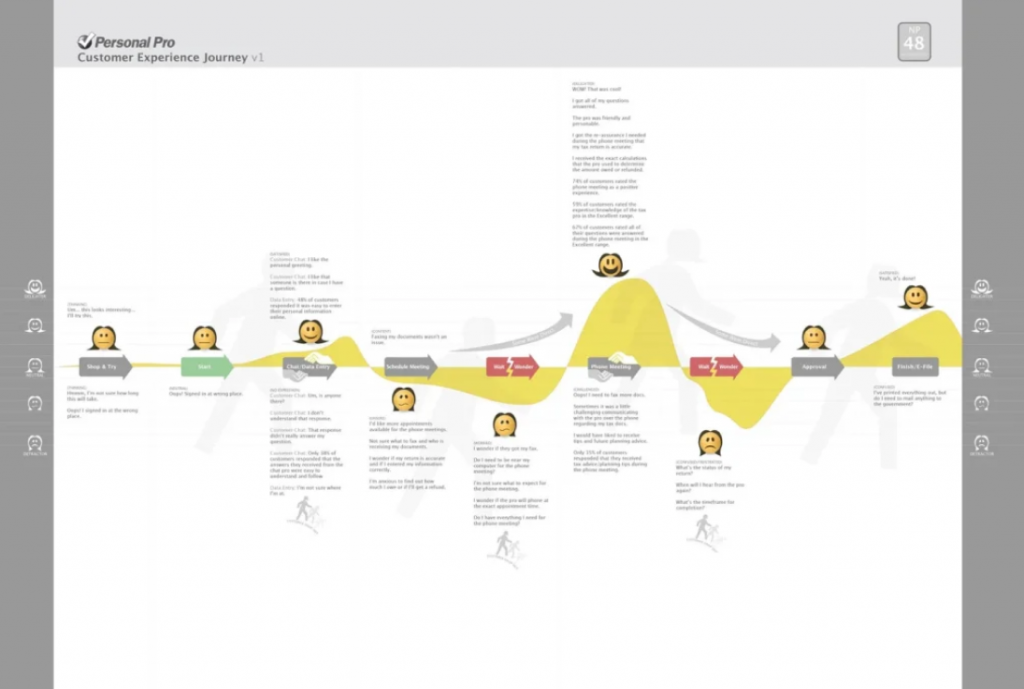
Challenge: TurboTax wanted to understand how users interacted with their new product, Personal Pro, and where they encountered friction in the filing process.
CX Map Focus: They mapped the entire journey—from landing on the website to completing a tax return. By analyzing customer interactions, they identified points of frustration, such as unclear instructions and slow response times in customer support.
Result: TurboTax made UX improvements, simplified navigation, and optimized their support channels. These refinements led to a smoother tax filing experience, reduced drop-offs, and increased user satisfaction.
- Starbucks: Enhancing Loyalty Through Personalization
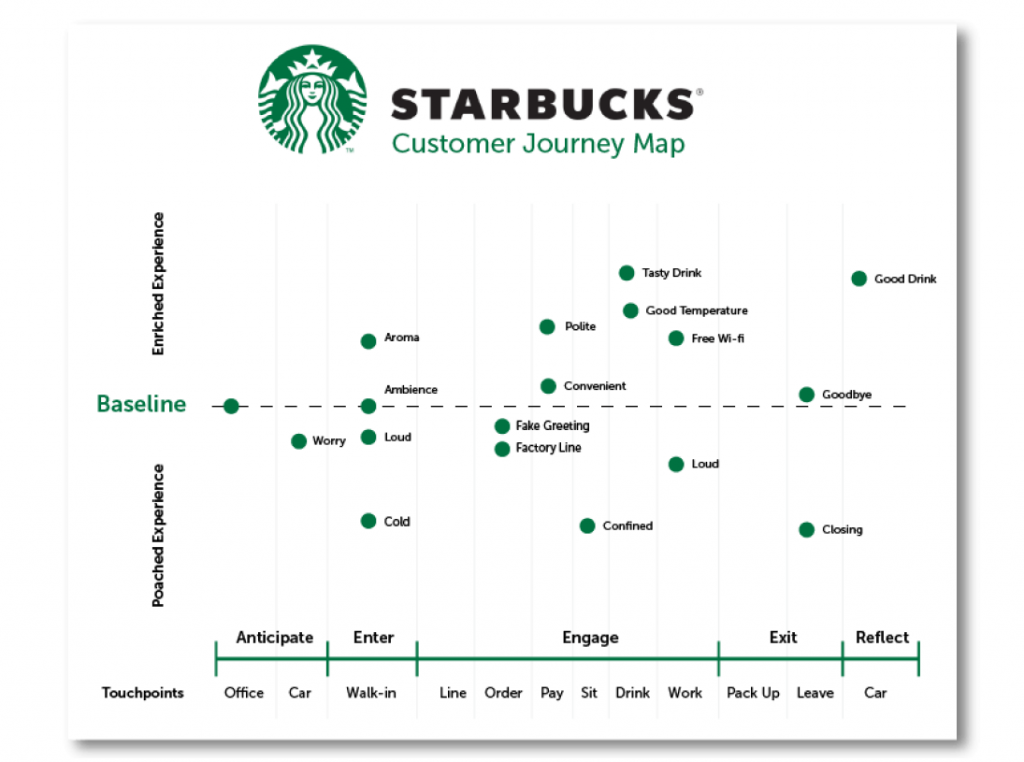
Challenge: Starbucks needed to refine its CX strategy to cater to repeat customers and improve overall engagement.
CX Map Focus: The company tracked customer interactions across multiple touchpoints—mobile app usage, in-store visits, digital marketing campaigns, and loyalty program engagement. The goal was to identify what kept customers coming back and where improvements could be made.
Result: Starbucks personalized customer interactions by enhancing its rewards program, introducing AI-driven recommendations, and optimizing in-app ordering. These efforts strengthened customer loyalty and boosted repeat purchases.
- LEGO: Creating a Customer-Centric Brand Experience

Challenge: LEGO wanted to understand the full customer journey, from product selection to in-store and digital experiences, to ensure they were meeting customer expectations at every stage.
CX Map Focus: They developed an “experience wheel,” which examined how customers interacted with LEGO products—whether through play, shopping, or online engagement. This map helped them identify pain points and highlight moments that mattered most to their customers.
Result: The insights led LEGO to improve its in-store experiences, refine digital engagement strategies, and launch more interactive content. By placing customer feedback at the center of their strategy, LEGO continued to foster deeper connections with its audience.
Turn Your CX Roadmap into Action
A great customer experience isn’t just about fixing problems—it’s about anticipating needs, creating meaningful interactions, and continuously evolving to meet customer expectations. A CX roadmap gives you the structure to do that, ensuring every decision is intentional and every improvement is customer-driven.
But even the best plans need real-time insights to stay relevant. That’s where listening tools like Qualaroo come in, helping you capture customer feedback right when it matters. When you combine a solid roadmap with direct customer input, you’re not just making educated guesses—you’re making informed decisions that drive real impact.
So, take the time to build your CX strategy, track your progress, and keep refining it.
Learn More About Customer Experience Roadmap
What is the CX framework?
A CX framework is a structured approach to managing customer experience, often involving key principles, methodologies, and tools for analyzing and improving CX.
What is a customer experience journey map?
A customer journey map visually depicts the stages customers go through when interacting with a company, highlighting touchpoints, emotions, and pain points.
How can employees contribute to improving CX?
Employees can contribute by providing excellent customer service, collecting customer feedback, exploring areas for improvement, and acting as brand advocates.
What are the six pillars of the customer experience model?
While interpretations vary, common pillars include personalization, integrity, expectations, time and effort, empathy, and resolution.
What is the customer experience cycle?
The customer experience cycle is a continuous loop that includes attracting, engaging, and nurturing customers to build lasting relationships.
FREE. All Features. FOREVER!
Try our Forever FREE account with all premium features!
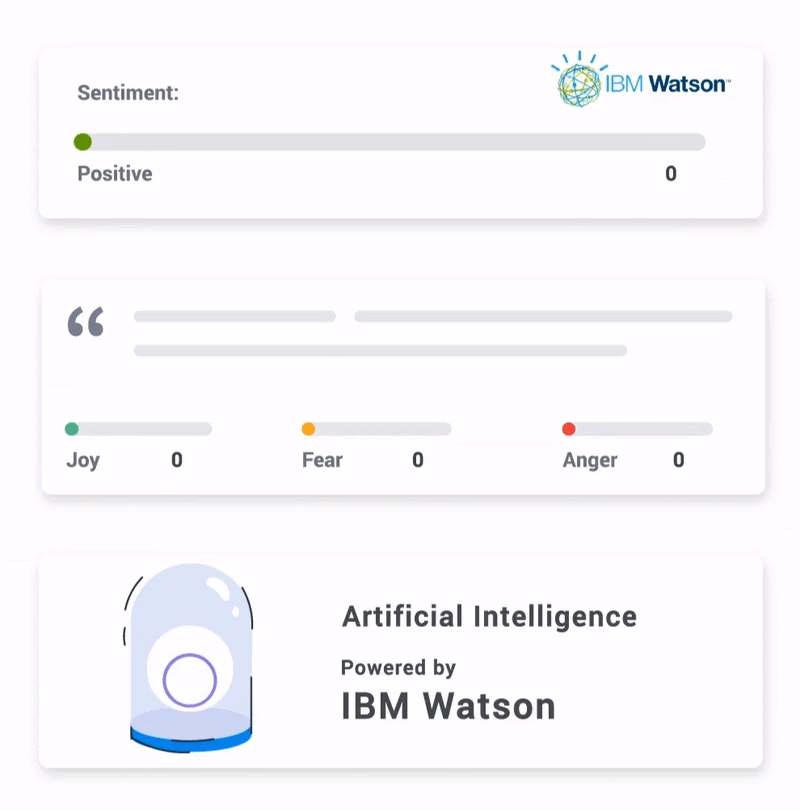
 We'd love your feedback!
We'd love your feedback! Thanks for your feedback!
Thanks for your feedback!



